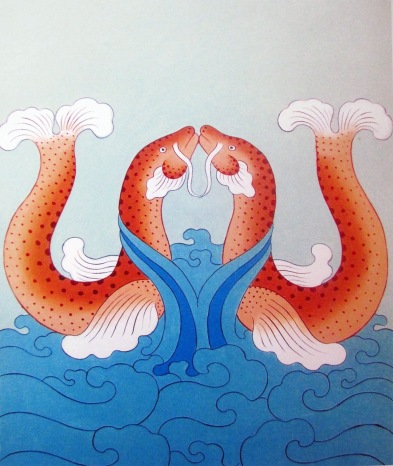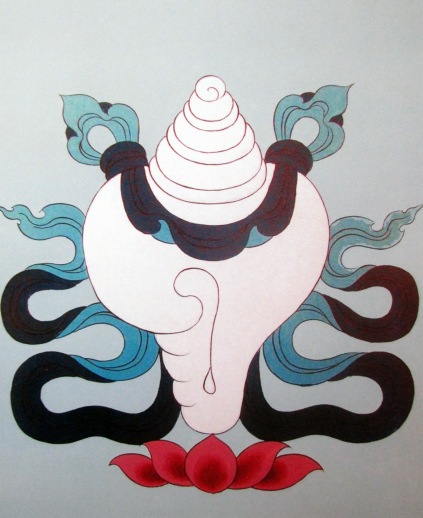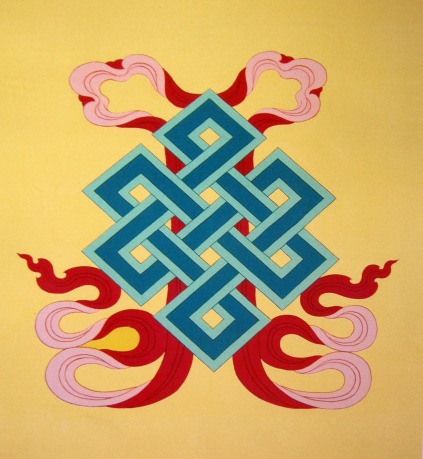Mandala,mandala gallery,art pillows,mugs,art lamp,notebook,ceramic ornament,art towels,art candles,tapestry,what are mandalas,mandala project,mandala coloring,new mandalas, mandala designs,mandala art,printable mandala,free mandala,the mandala, color mandala,what is a mandala,mandala,the artist gallery,abstract paintings,vintage paintings,photofraphies,famous paintings,graphites,budhism,meditation,about color,alternative,famous quotes,ancient mandala,jewelry,art,reproductions....
Pages
- Home
- Mandala gallery
- Mandala art
- Art on the wall
- Mandala on canvas
- Mandala jewelry
- Fine Art America
- Abstract paintings
- Vintage Mandala
- Personal Mandala
- Mandala art
- What is Mandala?
- Meditation books
- Inspiration quotes
- Flower Mandalas
- Poster
- Tibetan mandalas
- Sri Yantra mandalas
- Chakra Mandalas
- Earrings
- Necklaces
- Rings
- Bracelets
- Buddha paintings
- Free Mandala
- What are mandalas?
- Art
- Symbolism
- Abstract art
- Links
Friday, December 19, 2014
Sunday, November 16, 2014
Sunday, October 26, 2014
Malachite
Malachite Gemstone meaning
Malachite is believed to be a strong protector of children. It
is said to protect the wearer from accidents and protects travelers.
Malachite has been used to aid success in business and protect against
undesirable business associations. It is a stone of balance in
relationships.
Malachite is always green, usually in banded tones varying from
very dark green to a mellow green. Most malachite comes from Zaire,
Chile and Australia.
Ancient Egyptians, Greeks and Romans used malachite for jewelry
and ground it to use as eye shadow. It is used in amulets to protect
against the evil eye. In the Middle Ages it was used to protect children
from witches and other dangers.
Healing properties of Malachite
Malachite is a stone that should not be used for physical
healing. Malachite has been called the "mirror of the soul". It is
variable in its condition. It reaches the inner feelings of the person
and reflects what is there, negative or positive. It is so beautiful
that one would like to wear it in jewelry, but caution must be used when
wearing Malachite. It will always reflect how you feel, if you feel
negative don't wear Malachite. It reminds us that we have a dual nature
and it is up to each person to know and rule his own person. To help
get rid of nightmares, keep a piece of Malachite in your bedroom.
Use with copper to increase the power of malachite.
Wednesday, October 8, 2014
Sunday, October 5, 2014
Golden Fish (Tibetan: Ser Nya)
Tibetan symbol

Of the Eight Auspicious Symbols, the Golden Fish symbolize freedom and liberation,
as well as skill with handicrafts and power in the hands for healers.
(Image by the artist Kalsang Nyima)
White Conch Shell (Tibetan: Düng Kar)
Tibetan symbol

Of the Eight Auspicious Symbols, the White Conch Shell symbolizes the far-reaching sound of the Buddha’s teachings
as well as melodious sound in general.
(Image by the artist Kalsang Nyima)
Glorious Endless Knot (Tibetan: Pal Bé’u)
Tibetan symbol

Of the Eight Auspicious Symbols, the Glorious Endless Knot is a sign of the interdependence of all things.
It also represents activities and knowledge.
(Image by the artist Kalsang Nyima)
Saturday, October 4, 2014
Theta waves
Theta rhythm
The theta rhythm is an oscillatory pattern in electroencephalography(EEG)
signals recorded either from inside the brain or from electrodes glued
to the scalp. Two types of theta rhythm have been described. The "hippocampal theta rhythm" is a strong oscillation that can be observed in the hippocampus and other brain structures in numerous species of mammals including rodents, rabbits, dogs, cats, bats, and marsupials. "Cortical theta rhythms" are low-frequency components of scalp EEG, usually recorded from humans.
In rats, the most frequently studied species, theta rhythmicity is
easily observed in the hippocampus, but can also be detected in numerous
other cortical and subcortical brain structures. Hippocampal theta,
with a frequency range of 6–10 Hz, appears when a rat is engaged in
active motor behavior such as walking or exploratory sniffing, and also
during REM sleep.
Theta waves with a lower frequency range, usually around 6–7 Hz, are
sometimes observed when a rat is motionless but alert. When a rat is
eating, grooming, or sleeping, the hippocampal EEG usually shows a
non-rhythmic pattern known as Large irregular activity or LIA. The hippocampal theta rhythm depends critically on projections from the medial septal area, which in turn receives input from the hypothalamus
and several brainstem areas. Hippocampal theta rhythms in other species
differ in some respects from those in rats. In cats and rabbits, the
frequency range is lower (around 4–6 Hz), and theta is less strongly
associated with movement than in rats. In bats, theta appears in short
bursts associated with echolocation. In humans and other primates,
hippocampal theta is difficult to observe at all.
The function of the hippocampal theta rhythm is not clearly
understood. Green and Arduini, in the first major study of this
phenomenon, noted that hippocampal theta usually occurs together with
desynchronized EEG in the neocortex,
and proposed that it is related to arousal. Vanderwolf and his
colleagues, noting the strong relationship between theta and motor
behavior, have argued that it is related to sensorimotor processing.
Another school, led by John O'Keefe, have suggested that theta is part
of the mechanism animals use to keep track of their location within the
environment. The most popular theories, however, link the theta rhythm
to mechanisms of learning and memory.(Hasselmo, 2005)
Cortical theta rhythms observed in human scalp EEG are a different
phenomenon, with no clear relationship to the hippocampus. In human EEG
studies, the term theta refers to frequency components in the 4–7
Hz range, regardless of their source. Cortical theta is observed
frequently in young children. In older children and adults, it tends to
appear during meditative, drowsy, or sleeping states, but not during the
deepest stages of sleep. Several types of brain pathology can give rise
to abnormally strong or persistent cortical theta waves.
Monday, August 4, 2014
Alpha waves
Alpha waves
Alpha
waves are neural
oscillations in the frequency range of 7.5-12.5 Hz
arising from synchronous and coherent (in phase or constructive)
electrical activity of thalamic
pacemaker cells in humans. They are also called Berger's
wave in memory of the founder of EEG.
Alpha waves
are one type of brain
waves detected either by electroencephalography
(EEG) or magnetoencephalography
(MEG) and predominantly originate from the occipital
lobe during wakeful relaxation with closed eyes. Alpha waves are
reduced with open eyes, drowsiness and sleep. Historically, they were
thought to represent the activity of the visual cortex in an idle
state. More recent papers have argued that they inhibit areas of the
cortex not in use, or alternatively that they play an active role in
network coordination and communication. Occipital alpha waves during
periods of eyes closed are the strongest EEG brain signals.
An alpha-like variant called
mu (μ) can be
found over the motor cortex (central scalp) that is reduced with
movement, or the intention to move. Alpha waves do not start to
appear until three years of age.
Biofeedback training
Given the alpha wave's
connection with relaxed mental states, many people have latched onto
the idea of utilizing this state through a technique called
biofeedback training. This technique utilizes EEG to indicate to a
subject or trainer when the subject is in an alpha wave state, which
the subject is then instructed to remain in.
There are several different
prospects of this training that are currently being explored.
Arguably, the most popular one is the use of this training in
meditation.
Zen-trained meditation masters produce noticeably more alpha waves
during meditation. This fact has led to a popular trend of
biofeedback training programs for everyday stress relief.
Psychologists are hoping to
use this technique to help people overcome phobias,
calm down hyperactive
children, and help children with stuttering
problems to relax enough to practice regular speech.
There are other uses of
biofeedback training beyond therapy. Defense Department researchers
are exploring biofeedback as a way of getting captured soldiers to
create alpha waves, potentially foiling enemy lie detectors.
Biofeedback training has also been receiving attention as a possible
way of monitoring attention. It has been theorized that teaching
machines could use biofeedback as a way of monitoring children's
attention, with the appearance of alpha waves signaling a lapse of
attention.
Following this
lapse-of-attention line of thought, a recent study indicates that
alpha waves may be used to predict mistakes. In it, MEGs measured
increases of up to 25% in alpha brain wave activity before mistakes
occurred. This study used common sense: alpha waves indicate
idleness, and mistakes are often made when a person is doing
something automatically, or "on auto-pilot", and not paying
attention to the task they are performing. After the mistake was
noticed by the subject, there was a decrease in alpha waves as the
subject began paying more attention. This study hopes to promote the
use of wireless EEG technology on employees in high-risk fields, such
as air traffic controlling, to monitor alpha wave activity and gauge
the attention level of the employee.
Alpha waves for restoration and concentracion
Saturday, August 2, 2014
Tibet
Tibet
Tibet
(tɨˈbɛt/;
Tibetan:
བོད་, Wylie:
Bod,
pronounced [pʰø̀ʔ];
simplified
Chinese: 藏区;
traditional
Chinese: 藏區;
pinyin: Zàngqū;
Mongolian:
Tuvd,
also Tsast
meaning Snowy)
is a plateau
region in Asia, north-east of the Himalayas,
in the People's
Republic of China. It is the traditional homeland of the Tibetan
people as well as some other ethnic groups such as Monpas,
Qiang, and
Lhobas, and is now
also inhabited by considerable numbers of Han
and Hui people.
Tibet is the highest region on Earth, with an average elevation of
4,900 metres (16,000 ft).
Tibet emerged in the 7th century as a unified
empire, but it soon divided into a variety of territories. The
bulk of western and central Tibet (Ü-Tsang)
was often at least nominally unified under a series of Tibetan
governments in Lhasa,
Shigatse, or
nearby locations; these governments were at various times under
Mongol and Chinese overlordship. The eastern regions of Kham
and Amdo often
maintained a more decentralized indigenous political structure, being
divided among a number of small principalities and tribal groups,
while also often falling more directly under Chinese rule; most of
this area was eventually incorporated into the Chinese provinces of
Sichuan and
Qinghai. The
current
borders of Tibet were generally established in the 18th century.
Following the
collapse of the Qing
dynasty in 1912, Qing soldiers were disarmed and escorted out of
Tibet
Area (Ü-Tsang). The region subsequently declared its
independence
in 1913, without recognition by the following Chinese
Republican government. Later Lhasa took control of the western
part of Xikang
Province, China. The region maintained its autonomy until 1951
when, following the Invasion
of Tibet, Tibet became unified into the People's
Republic of China, and the previous Tibetan government was
abolished in 1959 after a failed uprising. Today, the P.R. China
governs western and central Tibet as the Tibet
Autonomous Region; while eastern areas are mostly within Sichuan,
Qinghai and other
neighbouring provinces, as ethnic
autonomous prefectures. There are tensions
regarding Tibet's political status and dissident groups which are
active in exile. It is also said that Tibetan activists in Tibet have
been arrested or tortured.
The economy of Tibet is dominated by subsistence
agriculture, though tourism has become a growing industry in
Tibet in recent decades. The dominant religion in Tibet is Tibetan
Buddhism, in addition there is Bön
which was the indigenous religion of Tibet before the arrival of
Buddhism in the 7th century CE (Bön is now similar to Tibetan
Buddhism) though there are also Muslim
and Christian minorities. Tibetan Buddhism is a primary influence on
the art,
music, and
festivals
of the region. Tibetan architecture reflects Chinese
and Indian
influences. Staple foods in Tibet are roasted barley,
yak meat, and butter
tea.
Friday, August 1, 2014
Color
Color

Color
or colour
(see spelling
differences) is the visual
perceptual property
corresponding in humans
to the categories called red,
blue,
yellow,
green
and others. Color derives from the spectrum
of light (distribution of light
power versus wavelength)
interacting in the eye with the spectral sensitivities of the light
receptors. Color categories and physical specifications of color
are also associated with objects or materials based on their physical
properties such as light absorption, reflection, or emission spectra.
By defining a color
space, colors can be identified numerically by their coordinates.
Because
perception of color stems from the varying spectral
sensitivity of different types of cone
cells in the retina
to different parts of the spectrum, colors may be defined and
quantified by the degree to which they stimulate these cells. These
physical or physiological
quantifications of color, however, do not fully explain the
psychophysical
perception of color appearance.
The
science of color is sometimes called chromatics,
chromatography,
colorimetry,
or simply color
science.
It includes the perception of color by the human
eye and brain, the origin of color in materials, color
theory in art, and
the physics of
electromagnetic
radiation in the visible range (that is, what we commonly refer
to simply as light).
Electromagnetic
radiation is characterized by its wavelength
(or frequency)
and its intensity.
When the wavelength is within the visible spectrum (the range of
wavelengths humans can perceive, approximately from 390 nm
to 700 nm), it is known as "visible light".
Most light sources emit
light at many different wavelengths; a source's spectrum
is a distribution giving its intensity at each wavelength. Although
the spectrum of light arriving at the eye from a given direction
determines the color sensation
in that direction, there are many more possible spectral combinations
than color sensations. In fact, one may formally define a color as a
class of spectra that give rise to the same color sensation, although
such classes would vary widely among different species, and to a
lesser extent among individuals within the same species. In each such
class the members are called metamers
of the color in question.
Wednesday, July 23, 2014
Thursday, July 10, 2014
Cultural history of lucid dreaming
Lucid dreaming through the history
Even though it has only come to the attention of the general
public in the last few decades, lucid dreaming is not a modern
discovery. Lucid dreaming is the western term used to denote a
practice similar to Yoga
nidra. The distinguishing difference is the degree to which one
remains cognizant of the actual physical environment as opposed to a
dream environment. In lucid dreaming, we are only (or mainly)
cognizant of the dream environment, and have little or no awareness
of our actual environment. The concept of Yoga nidra is very ancient
in Indian traditions such as Hinduism and Buddhism. Krishna
is often associated with Yoga nidra in epic Mahabharata.
Similarly, many yogis and rishis are supposed to have experienced
Yoga nidra throughout their life. In modern times, Yoga nidra was
experienced by Swami
Satyananda Saraswati[citation
needed] when he was living with his guru Swami
Sivananda in Rishikesh. He began studying the tantric scriptures
and, after practice, constructed a system of relaxation, which he
began popularizing in the mid 20th century. He explained yoga nidra
as a state of mind between wakefulness and sleep that opened deep
phases of the mind, suggesting a connection with the ancient tantric
practice called nyasa, whereby Sanskrit
mantras are
mentally placed within specific body parts, while meditating on each
part (of the bodymind).
The form of practice taught by Swami Satyananda includes eight stages
(Internalisation, Sankalpa, Rotation of Consciousness, Breath
Awareness, Manifestation of Opposites, Creative Visualization,
Sankalpa and Externalisation).
Also, in early Buddhism
it was a common practice among people in the monastic community. As
preserved in the ancient Sarvastivada
school's Sutra on Mindfulness
of the Body in the Madhayama agama (equivalent of Pali Kayagatasati)
it states that monks and nuns under practice should be 'Understanding
(having awareness in) the four postures and states of being asleep or
awake'. Documented since the 8th century, Tibetan
Buddhists and Bonpo
were practicing a form of dream
yoga held to maintain full waking consciousness while in the
dream state. One important message of the book is the distinction
between the Dzogchen
meditation of awareness and dream yoga. The Dzogchen
awareness meditation has also been referred to by the terms
rigpa awareness, contemplation, and presence.
Awareness during the sleep and dream states is associated with
the Dzogchen practice of natural light. This practice only
achieves lucid dreams as a secondary effect—in contrast to dream
yoga, which aims primarily at lucid dreaming. According to Buddhist
teachers, the experience of lucidity helps us understand the
unreality of phenomena, which would otherwise be overwhelming during
dream or the death experience.
In Western culture, the phenomenon had been referred to by Greek
philosopher Aristotle
who had written: "often when one is asleep, there is something
in consciousness which declares that what then presents itself is but
a dream". Also in a letter written by St.
Augustine of Hippo in 415 AD about a story of a dreamer, Doctor
Gennadius, refers to lucid dreaming. The dreamer reported that he
didn't realize he was in the dream world but the man whom he met in
his dream reminded him about this and pointed out that his experience
was a proof of life after death.
An early recorded lucid dreamer was the philosopher and physician
Sir Thomas
Browne (1605–1682). Browne was fascinated by the world of
dreams and described his own ability to lucid dream in his Religio
Medici: "...yet in one dream I can compose a whole
Comedy, behold the action, apprehend the jests and laugh my self
awake at the conceits thereof". Similarly, Samuel
Pepys in his diary entry for 15
August 1665 records a dream "that I had my Lady Castlemayne
in my arms and was admitted to use all the dalliance I desired with
her, and then dreamt that this could not be awake, but that it was
only a dream". Marquis
d'Hervey de Saint-Denys argued that it is possible for anyone to
learn to dream consciously. In 1867, he published his book Les
Rêves et les moyens de les diriger; observations pratiques
("Dreams and How to Guide them; Practical Observations"),
in which he documented more than twenty years of his own research
into dreams.
The term lucid dreaming was coined by Dutch
author and psychiatrist
Frederik
van Eeden in his 1913 article "A Study of Dreams".
This paper was highly anecdotal and not embraced by the scientific
community. Some consider this a misnomer because it means much more
than just "clear or vivid" dreaming. The alternative term
conscious dreaming avoids this confusion. However, the term
lucid was used by van Eeden in its sense of "having
insight", as in the phrase a lucid interval applied to
someone in temporary remission from a psychosis,
rather than as a reference to the perceptual quality of the
experience, which may or may not be clear and vivid.
In the 1950s, the Senoi
hunter-gatherers of Malaysia
were reported to make extensive use of lucid dreaming to ensure
mental health, although later studies refuted these claims.
A 2012 report by the BBC
claimed that "interest in lucid dreaming has grown in recent
years", and corroborated this with examples of the many
smartphone apps
that exist to help people experience the phenomenon. One such app was
downloaded half a million times in six weeks, the report says.
Monday, July 7, 2014
Thursday, May 22, 2014
Friday, May 16, 2014
Tuesday, April 22, 2014
Sunday, April 20, 2014
Friday, April 18, 2014
Subscribe to:
Posts (Atom)



































